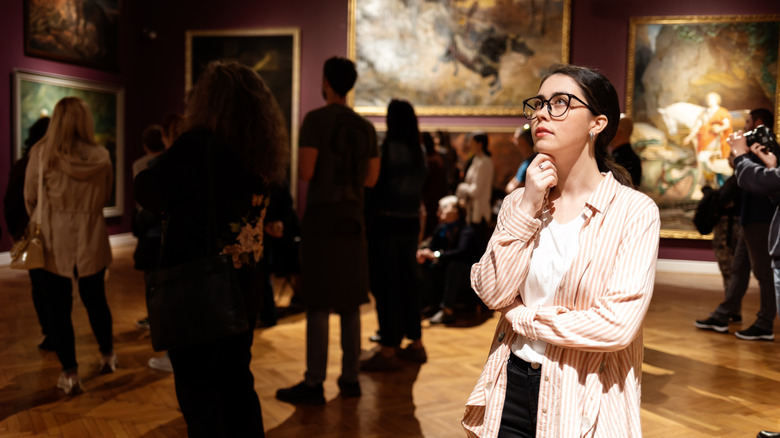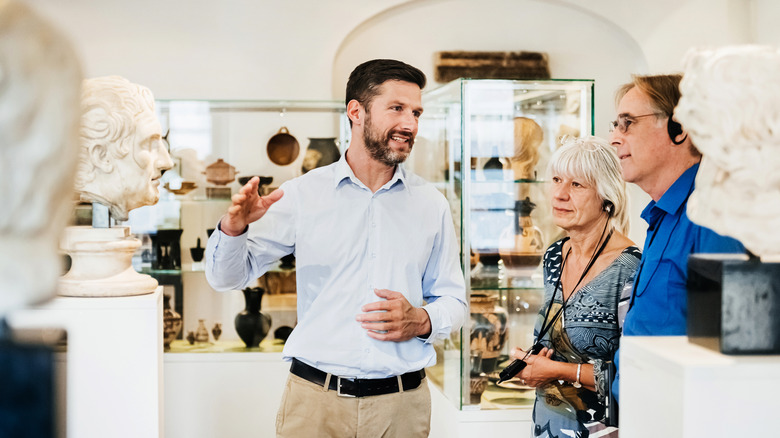How Rick Steves Makes The Most Of Museum Visits Without Spending Extra
If there's one thing Europe is filled to the brim with, it's museums. From the iconic Louvre in Paris to the Prado in Madrid, one could spend days enjoying the art of one museum and still not have enough time to see everything. For some, perusing the halls of ancient castle ruins and seeing the intricate designs woven into the colorful tapestries is pure bliss. For others, a day surrounded by classical art can be torture. Travel is experienced differently by everyone.
Visitors may also feel that spending a day at one of the more popular museums — be it indoor or open-air — can quickly become costly and irreparably dent a conscious budget. After all, why spend all that money to walk around not understanding the significance behind the art, monument, or artifact in front of you? Guided tours are arguably the best way to get the full story of a museum or gallery's works, but these curated experiences often come at a high cost.
But don't worry, because there is hope (and by "hope," we mean "a hack.) For those who feel lost when it comes to understanding why anyone would find walking the halls of a museum interesting, travel aficionado Rick Steves has a few suggestions. Learning is vital. In a blog about sightseeing strategies on his website, Steves states, "When you understand the context in which things were made, who paid for it and why, what the challenges of the day were, and so on, paintings and statues become the closest thing Europe has to a time machine." With that said, how can you make the most of your time in a museum and ensure you are getting the full story behind the art or ruins without breaking the bank? A spot of eavesdropping, that's how.
Visiting a museum on a budget
If you aren't happy about the price tag attached to a guided tour of a museum, Steves suggests exploring the place within earshot of another tour. Of course, there is more to it than that, but there is a lot to be gleaned from some second-hand guidance. Steves goes on to say that if you are interested in a particular piece of art, "spend a half hour studying it and listening to each passing tour guide tell his or her story ... they do their research and come up with a different angle to share." While this may seem unethical, as long as you don't join the tour, Steves says there's nothing wrong with gathering different information for free. If this makes you uncomfortable, there are hundreds of guided tours offered at museums and historical sights, all with different price tags to fit each budget.
According to Steves, visitors have many options when it comes to learning more about the art. First and foremost, museums are huge. As Rick says, a common misconception is that "a great museum only has great art, but only a fraction of the pieces are masterpieces worthy of your time." He suggests grabbing a guidebook and utilizing it to find the pieces you are most interested in. If a guidebook is outside of your budget, many museums offer free pamphlets highlighting the most popular artworks.
You can also visit a museum's website before visiting to see which art pieces are highly recommended to make sure you don't miss out on anything particularly special. Of course, many guided tours are well worth the price tag, so shop around online for reviews before deciding between spending or eavesdropping. Art deserves attention, after all.

